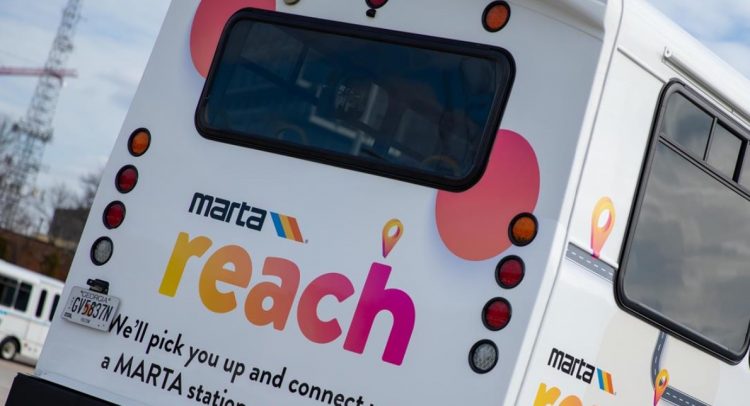Environment
North Atlantic right whales face new peril as numbers stabilizeNovember 3, 2025

By David Pendered
July 30 — Survival of the nation’s transit systems may depend on service innovations such as door-to-door service, which MARTA is evaluating, and new revenues such as New York’s planned commuter tax, according to panelists at a recent briefing hosted by the Volcker Alliance and Penn Institute for Urban Research.
This inflection point is beginning to appear as cities including metro Atlanta start to evaluate their post-pandemic future. Mobility is among a host of urban issues that have burst into the public zeitgeist, including housing, sustainability, public safety, physical and mental health, and addiction.

All this as a key source of local funding, taxes on commercial property, may be weakening as tenants leave office buildings and retail spaces — leaving the structures less valuable and worth less on the tax digest.
One warning sign for transit cited by several panelists is the national decline of transit ridership that began with the pandemic. Ridership nationwide has rebounded very slowly since March 2020 and has recovered to only 76 percent of its pre-pandemic level, according to the latest report from the American Public Transportation Assoc.
The resulting decline in fare box collections, coupled with the ending of federal pandemic relief funding for transit, prompted the S&P rating agency in January to reduce the transit sector’s outlook to negative, according to Kurt Forsgren, managing director and sector leader for transportation in Public Finance.
“This [downgrade] is really based on two main factors,” Forsgren said during the July 27 Special Briefing hosted by Volcker/Penn IUR. “One, the stubbornly slow ridership and fare performance that we really don’t see changing in the foreseeable future [and] this structural operating fund deficit that many agencies will be facing even when their federal assistance runs out.”
MARTA is an outlier in this conversation.
Fitch Ratings raised MARTA’s credit rating by one notch, removed a negative watch and assigned a stable outlook in an August 2022 rating action.
MARTA’s current budget was balanced with no fare increase, for the 12th consecutive year, and provides for the resumption of pre-pandemic levels of bus and rail service.
MARTA’s rate of ridership recovery matches the national average, according to figures provided. Trips for recreation at off peak hours, for events such as Taylor Swift’s concert, have helped offset the ridership loss during the work-day commute, MARTA reported after adopting a budget in June. New York City’s transit chief, Janno Lieber, cited during the Volcker/Penn IUR discussion a similar phenomenon of off-peak travel experienced by the Metropolitan Transportation Authority.
MARTA’s budget for Fiscal Year 2024, which started July 1, also provides for continuing construction and capital improvements including the Summerhill BRT.
“MARTA’s priorities are clearly reflected in the FY24 budget,” MARTA General Manager and CEO Collie Greenwood said in a June 8 statement. “We are investing in our employees and our customer experience, and that means restoring service to pre-COVID levels, continuing to add bus shelters throughout the system, getting our first Bus Rapid Transit and Arterial Rapid Transit lines under construction and getting ready for our new rail cars. As riders return to MARTA, we are committed to providing an experience and service level they can enjoy and rely on.”
The notion of door-to-door, on-demand transit service was raised in the Volcker/Penn IUR discussion by Anthony Fox. Fox served in the Obama administration as transportation secretary and has joined Lyft as chief policy officer and advisor to the president/CEO.
To survive financially, transit agencies are likely to require new sources of revenue, Fox said.
The latest buzz is New York City’s pending tax on commuters entering the business district south of 60th Street. The Washington Post on July 21 published a description of the commuter tax. The commuter tax is in addition to the $5 a month increase in the price of an unlimited MTA transit pass, to $132.
Service delivery models also will have to be changed, Fox said.
“My hope is that transit agencies will be creative in finding ways to move toward a more on-demand transit future,” Fox said. “I think those innovations mimicking a bit of what private sector is doing can help us meet the demand where it is, which is more door to door today than it’s been in the past.”
MARTA tested a door-to-door service for six months in 2022, starting March 1. To test MARTA Reach, MARTA collaborated with Georgia Tech and the Atlanta Bicycle Coalition. The federal Department of Energy provided funding in the form of a $1 million Stage 2 Civic Innovation Challenge grant.
More information on the project is available from MARTA and Georgia Tech.

0